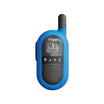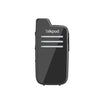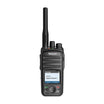The most emergency services mostly use the dedicated TETRA network, although some fire brigades have looked to DMR, as for a start they tend to use VHF which is not offered in TETRA. In this area DMR Solution have a good product offering, with again terminals that offer a migration pathway (In this case the technology was analogue conventional so the migration would be to Tier 2 DMR).
ATEX Intrinsic safety is often a requirement for some of the situations that fire crews have to attend, as are specific accessories to be worn when the person is wearing gloves, helmets, breathing apparatus and heavy duty clothing.
Therefore, products like the Talkpod DMR series that are rugged and waterproof, support analogue conventional and DMR, have an ATEX variant and can use the specialised accessories required (bone conduction and throat microphones, large PTT controller buttons).
- Reliable Communication in Crisis Situations
- Seamless Coordination Among First Responders
- Enhanced Coverage and Signal Penetration
- Priority Access to Communication Channels
- Interoperability with Multiple Agencies and Services
- Quick Deployment and Setup in Emergency Scenarios
- Real-time Tracking and Monitoring of Personnel
- Integration with Location-Based Services
- Secure Communication with Encryption Features
- Increased Situational Awareness for Effective Decision-Making









































